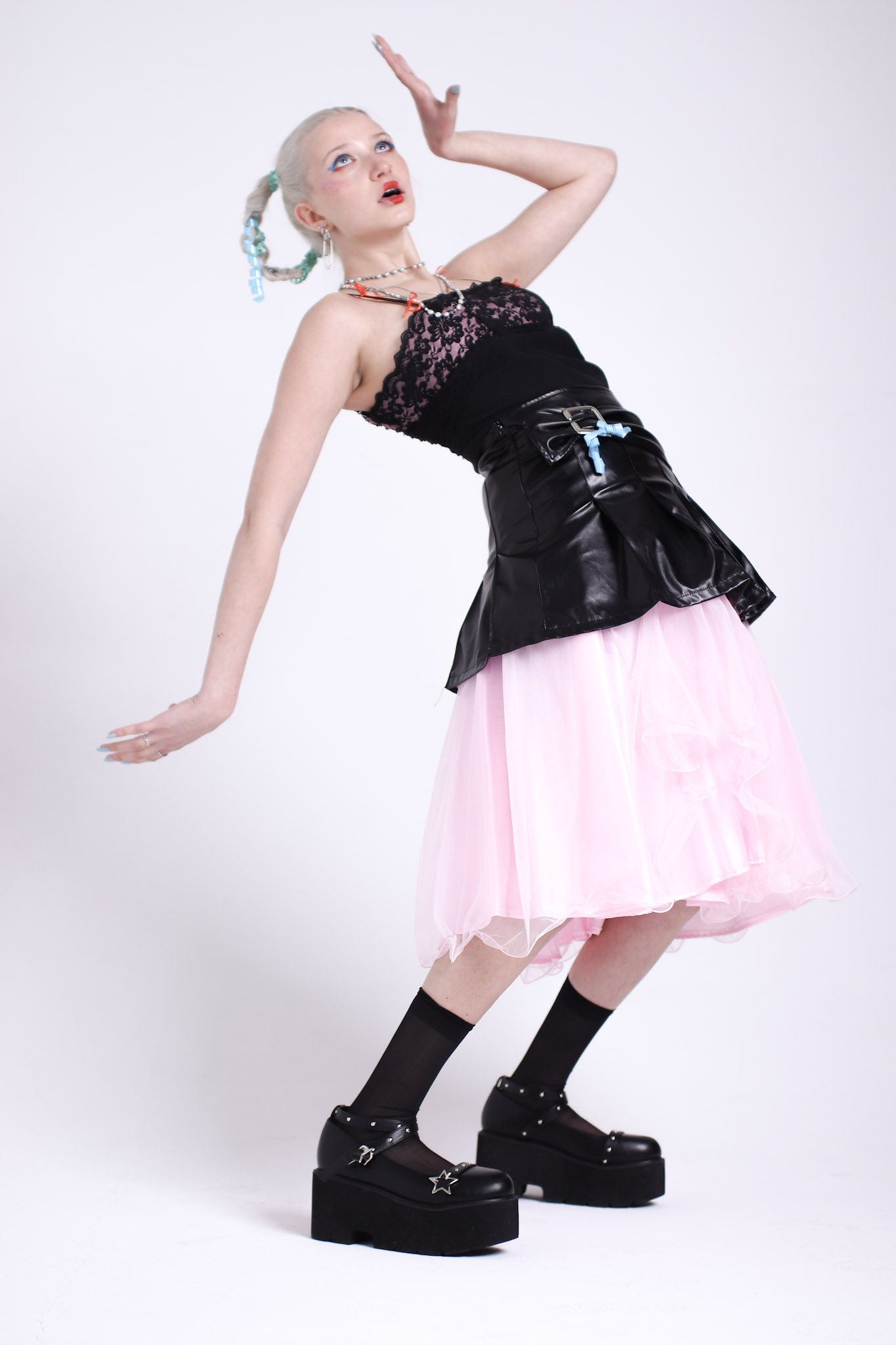
4 minute read
WE'RE ALL MAD HERE
Going Bold At Tea Time
Powder-white face with bold pink eye shadow, a sash made out of thread spools, and an iconic oversized top hat sitting on top of wild bright orange hair. A picture of Tim Burton’s Mad Hatter should come straight to mind, a character whose style can be described wholeheartedly as maximalism.
Advertisement
Maximalism is an artistic movement described as the “aesthetic of excess.” In the world of fashion, it is detected through a variety of bold colors, striking patterns, excessive layering, and sometimes even campy pieces and accessories. A key component of maximalism is to not follow usual fashion guidelines; rather, people should embrace their own personal style and reject the societally accepted rules of fashion and art.
Maximalism is not a new concept within the fashion community. People have been adhering to the rules of maximalism for decades. Looking back on the past few decades, we have seen ebbs and flows of maximalism in American fashion culture. In the 1980s, there was a boom in maximalist fashion with bright colors, unique clothing, and big hair. During the 90s, people began shying away from the eccentric fashion of the 80s and taking inspiration from the supermodels of the time. People began wearing cleaner lines and simpler colors. Then, in the 2000s, there was another dramatic switch; this time with rhinestones, chunky shoes, bright-colored tracksuits, and bold belts.
In 2008, the country faced a large recession in which the maximalism lifestyle was no longer a realistic style to follow. Then following the 2020 COVID-19 pandemic, we saw a portion of people returning to the maximalism ideology. After the boredom of lockdown, a period in which fashion was mainly limited to sweatpants and t-shirts, people began wearing pieces that gave them the most joy, with no exact style in mind. People were so excited to finally go out and wear lively, fun clothes that they didn’t care if the way they dressed was following the accepted rules of fashion or not. This was only accelerated by rapidly growing social media platforms such as Tik Tok. This allowed creators to share their personal style with the world, with others becoming inspired by their art. There has been a growth in layering, bright colors, and eye-catching patterns.
This growth in maximalism has led people to question whether or not it is a sustainable and environmentally friendly form of fashion. Many worry that maximalism promotes a sense of over-consumption that will eventually leave pieces of clothing sitting in landfills. The rise of social media has shown that maximalism does not have to promote this environmentally destructive lifestyle. Purchasing clothes from second-hand retailers and purchasing pieces that can be integrated into multiple different looks and ways allow for the maximalism look to become one that is sustainable as well.
When taking a look at Tim Burton’s film, specifically his own adaptation of “Alice in Wonderland,” one can see a lot of elements of maximalism in his work. Burton’s work was inspired by German Expressionism, in which art is inspired by the creator’s own emotions and feelings rather than cloning what they saw in reality.

Though Burton’s work is usually darker and grungier, there are still many shared principles of maximalism. Characters are still seen wearing eccentric clothing with lots of layering, and most importantly, Burton’s work expresses his and his characters’ emotions rather than what art would expect of them.


KATELYN WESCOTT WRITTEN BY























